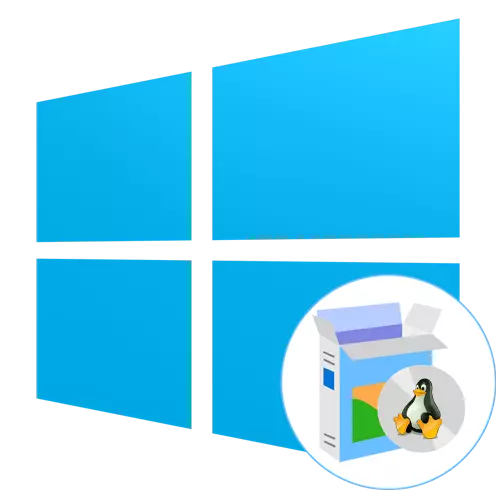
Step 1: Marking of disk space in Windows 10
The correct installation of the two operating systems is only possible with the correct division of disk space. On the local media should be a unallocated place that does not have any file system and does not store individual elements. By default, there is no such space, so it will have to be created independently by compressing the partition of the hard disk. In Windows 10, this is done like this:
- After downloading the OS, right-click on the "Start" and in the context menu that appears, select "Disk Management".
- After switching to the appropriate menu, select one of the existing sections. The best one is suitable where the personal files are stored or just a section with a large number of free space. Click PCM by such a section and find the "Squeeze Tom" parameter.
- Expect to complete the compression space query operation.
- In the window that appears, set the optimal size of the compressible space in megabytes. It is in the future that will become allocated for the second operating system.
- After the end of this operation, you will see that part of the disk is marked with black and has an attribute "not distributed".

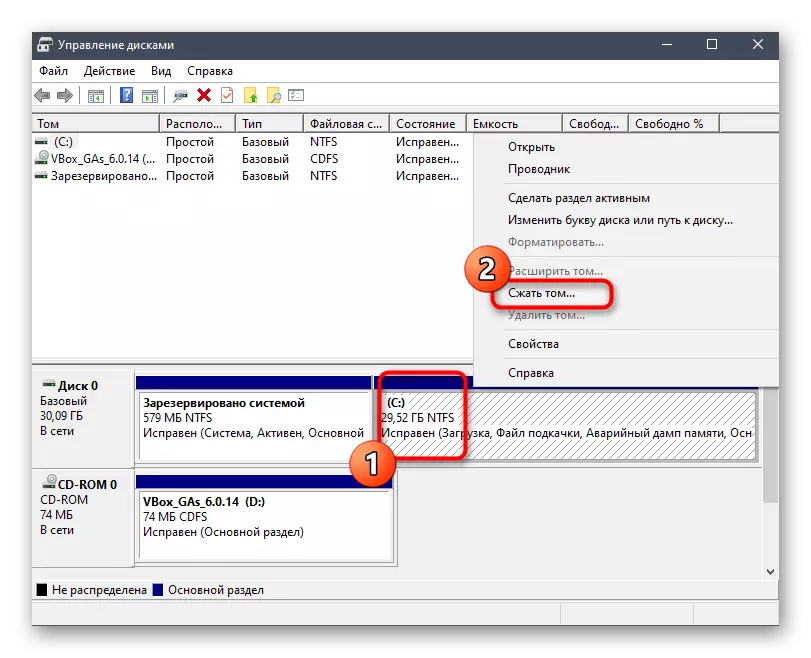


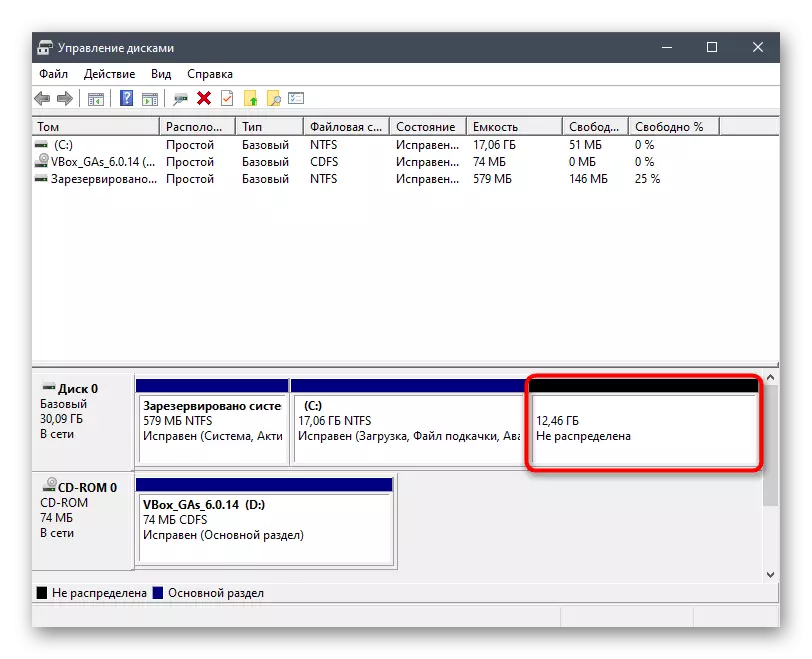
No more actions with this space should be done, since we need it in this form. Next, the Linux distribution will automatically create a new logical volume and determine the file system for it.
Step 2: Selection and Loading Linux distribution
As you know, now on the Internet is a huge number of various Linux distributions, which was based on popular assemblies, such as Debian or RedHat. We advise you to read individual materials on the topic of the OS selection on our website, if you do not know which Distribution you want to install next to Windows 10.
Read more:
Popular Linux distributions
Select Linux distribution for a weak computer
Today we decided to take an example one of the most promising and laconic in terms of the appearance of distributions called Elementary OS. Let's briefly consider how the image is downloaded, and you, pushing out from the features of the official site of the selected assembly, do the same operation by receiving the ISO file to your computer for its further record.
- Go to the official website of the Linux manufacturer and open the downloads section. In the case of Elementary OS, developers offer to pay any price for downloading. If you specify 0, you can get a file for free.
- Click on the "Download" button to proceed to the option of the Distribution version.
- You can download the latest stable assembly directly from the server or select any other supported and, for example, download it through Torrent.
- Choose a place to download the image and wait for the end of this procedure. After that, go to the next step.
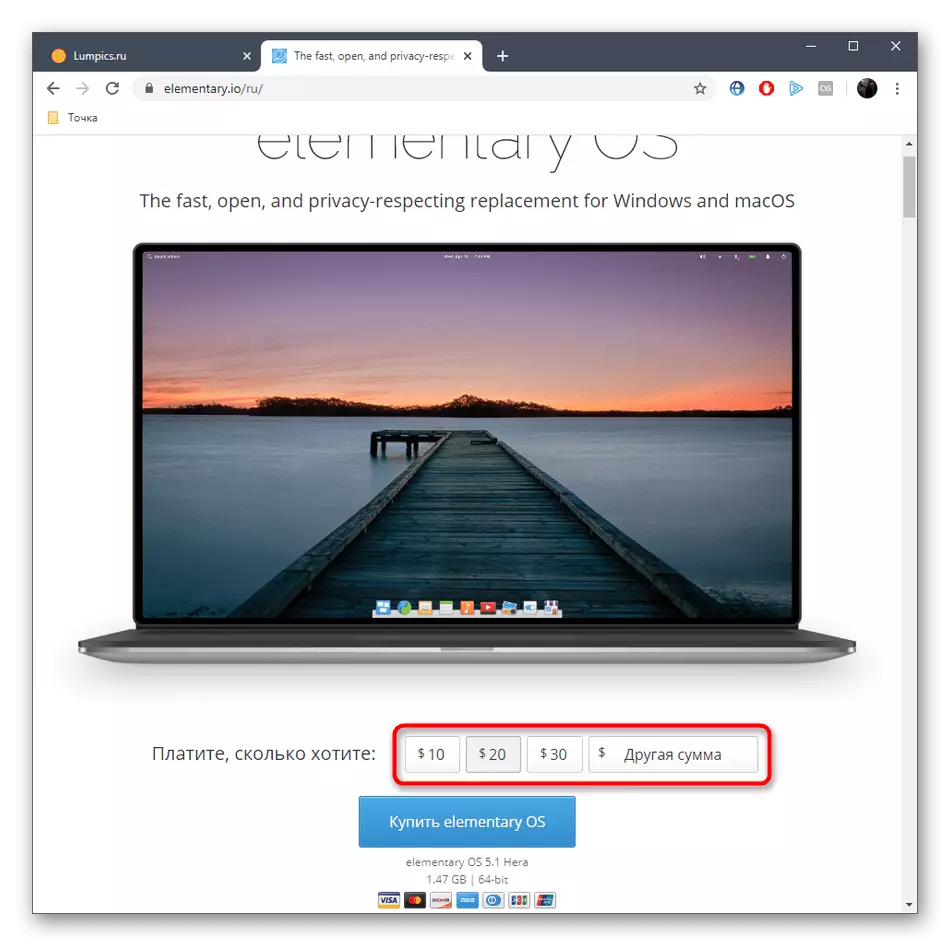

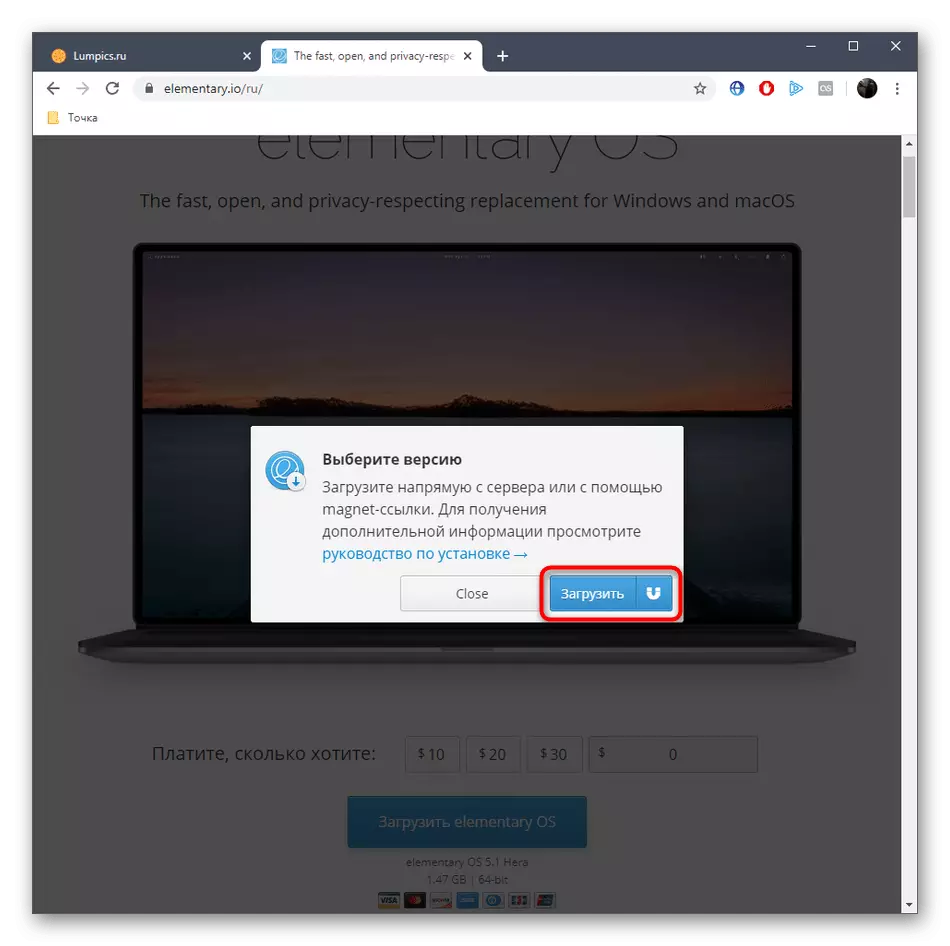
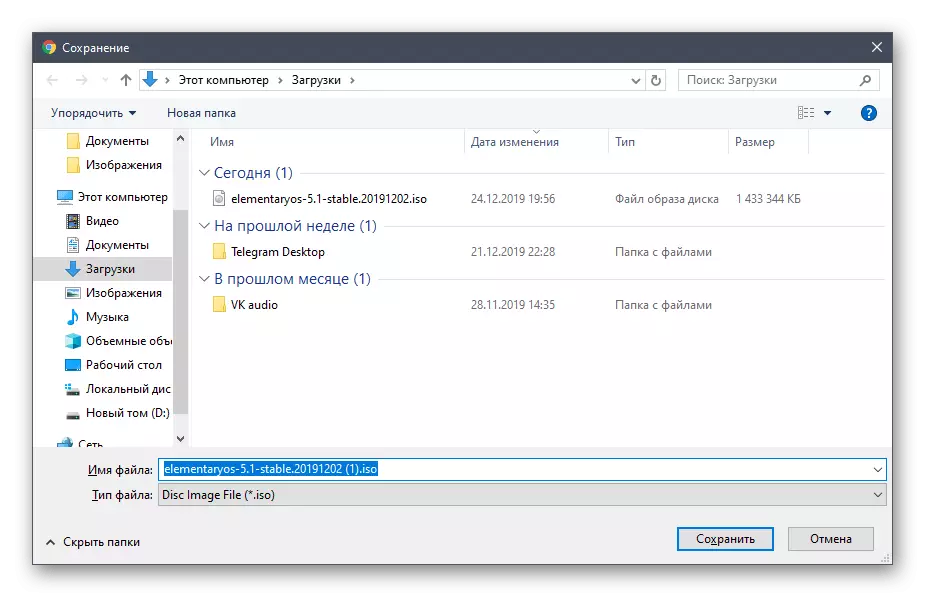
Step 3: Creating a bootable flash drive and configuring BIOS
Unfortunately, it is impossible to simply load the resulting image to start installing the system. To do this, it is pre-written to the removable media, which most often serves a USB flash drive. This makes a boot device, readable by BIOS as a full-fledged disk with files for installation. For more details on the execution of this process, read in a separate material on our website by clicking on the link below.Read more: Hyde on the ISO image image on the Flash drive
Additionally, we note that in most cases a similar device is loaded correctly after turning on the computer, but sometimes you have to configure the BIOS by setting the priority of devices. On our site there is also an article where guide on this topic is given. Check out it if some problems have arisen with the download.
Read more: Configure BIOS to download from a flash drive
Step 4: Preparation and Installation
The most important step of today's material is to install Linux next to Windows 10. You already know what an example we took Elementary OS. This decision was made not only due to the demand of the distribution itself, but also because of its graphic installer, which has many similar to other tools in different assemblies. It remains only to follow the instructions, given the features of the selected OS to cope with the task without any difficulties.
- Insert the bootable flash drive into the free connector and turn on the computer. You will be notified of the download of Elementary OS in three seconds.
- In the welcome window, select the best language and click on "Install Elementary".
- Take advantage of the list to determine the keyboard convenient for you. Here you can check it in a specially reserved line.
- The following window is responsible for choosing components for download. By default, there is a tick near the "Download updates during installing Elementary". We recommend not to remove it, and the second item is activated at your own request.
- The main action required for execution is the choice of installation type. Here tick the "Install Elementary next to Windows 10" checkbox, and then press the button to install.
- Confirm the marking of the free space with the formation of a new file system.
- Select the current time zone. This is required to successfully synchronize time.
- The last stage is to create a user account. He will be assigned root rights.
- After that, the installation of the distribution will immediately begin. During this, do not turn off the computer, otherwise the entire process will bet.
- After graduation, a notification will appear. It should click on "reload", and then you can extract the loading flash drive from the connector, since it will not be useful for us.
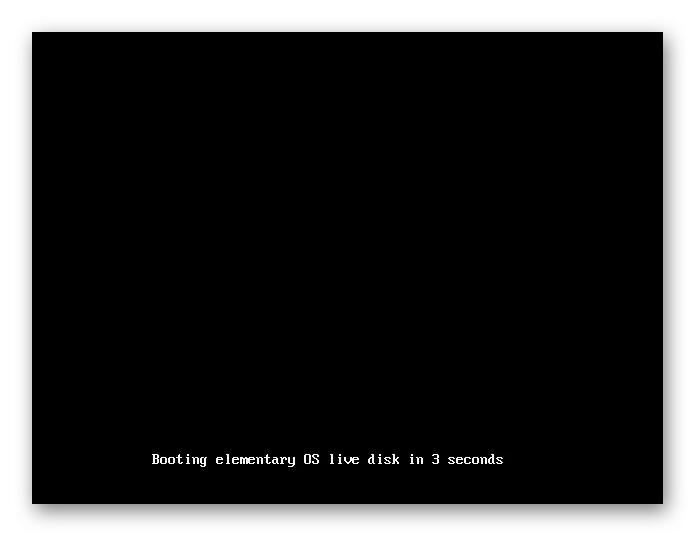
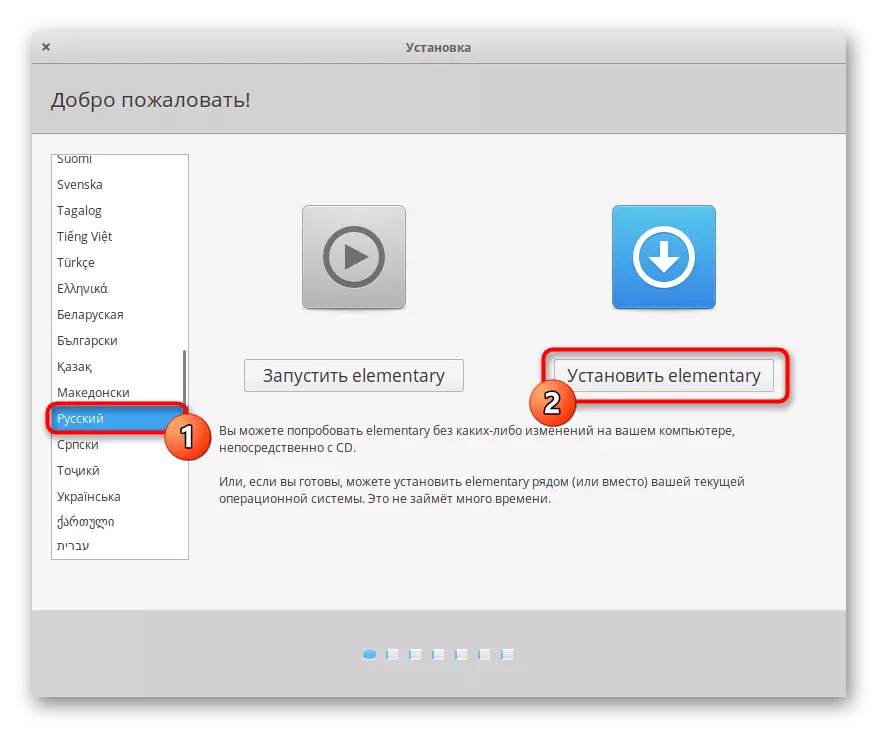
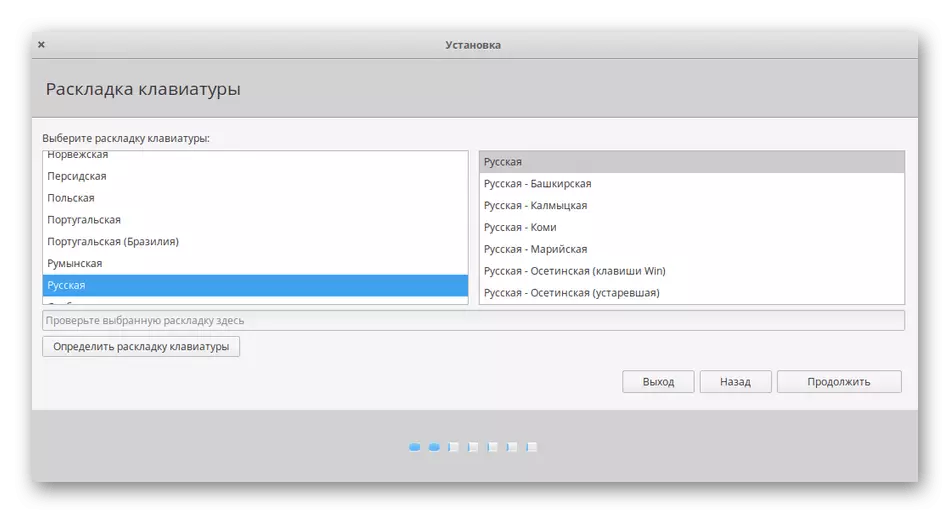
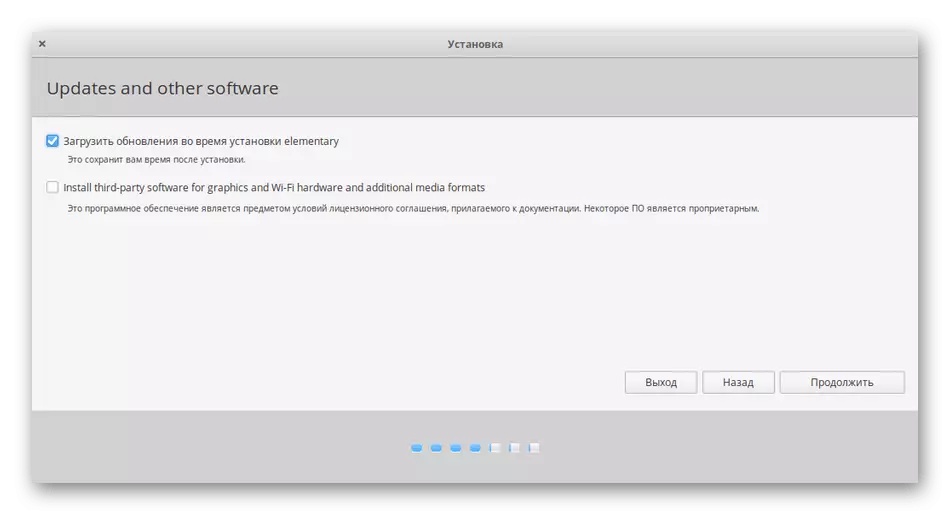

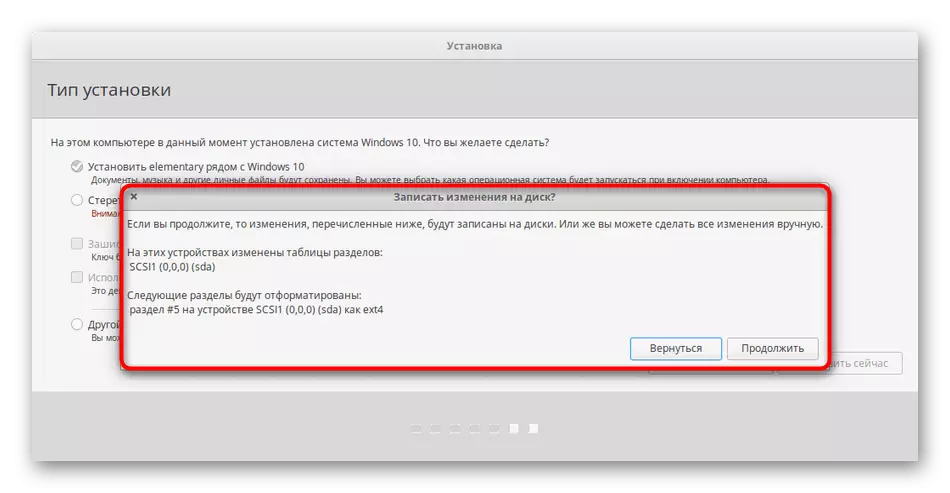
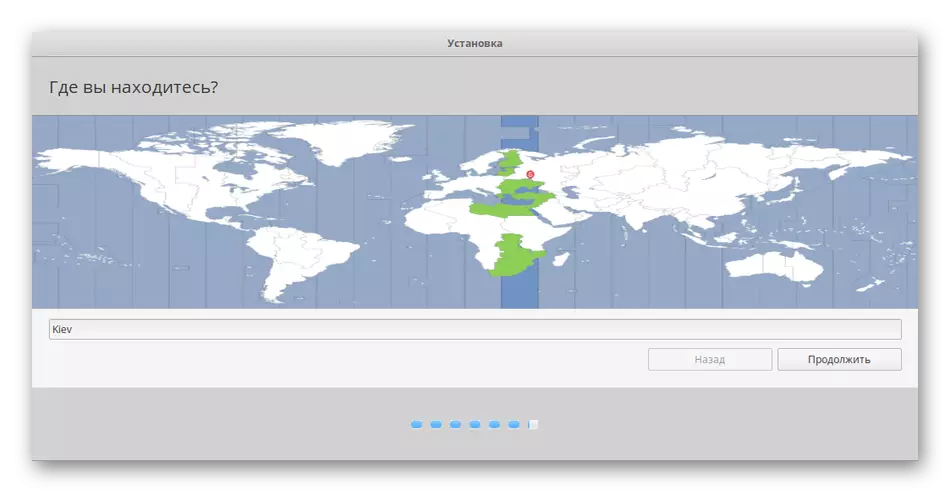
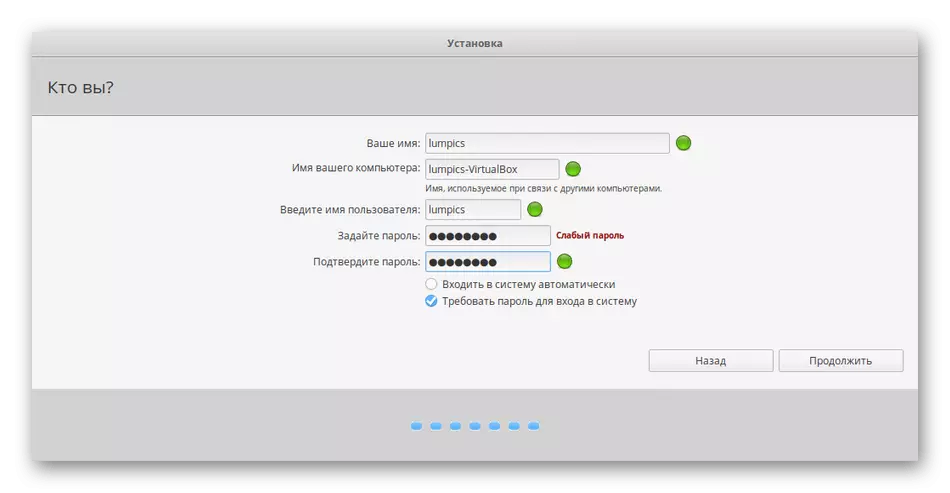


Step 5: Running and using Linux next to Windows
It remains only to make the first launch to make sure in the correct work of Linux. Now the standard bootloader will change its appearance. It will be possible to choose which operating system should be included this time. For moving, arrows on the keyboard are used, and activation occurs by pressing the ENTER key.
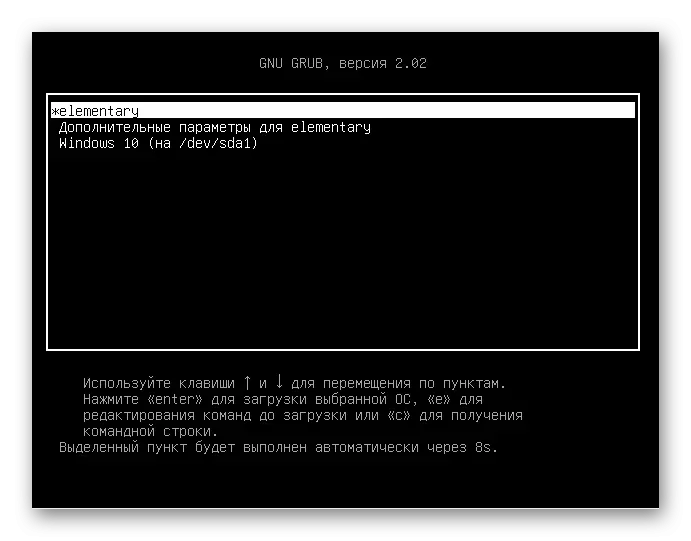
As you can see, the authorization window appears in Elementary OS, which means that all previous actions have been fulfilled correctly. Now you can enter your profile and start interaction with the new OS.

Many users who just begin their acquaintance with Linux, do not yet know how to perform certain actions, such as installing programs, or create new accounts, since the management is significantly different from the same Windows. Therefore, we propose to learn more by learning materials on the topics of Linux, while turning on the links below.
See also:
Installing and Configuring a File Server in Linux
Setting up mail server in Linux
Synchronization of time in Linux
Change passwords in Linux
Restart Linux through the console
View Disk List in Linux
User change in Linux
Completion of processes in Linux
The Linux's graphical interface does not replace the console completely, so sooner or later you will have to contact the classical application "Terminal" to enter the command there. On our site there are also guidelines on interaction with popular standard console utilities.
See also:
Frequently used commands in "Terminal" Linux
LN / FIND / LS / GREP / PWD / PS / ECHO / Touch / DF command in Linux
Today you have learned about the principles of the Linux installation near Windows 10. When performing this task, the main thing is to specify the correct type of installation in order not to accidentally erase the user files of Windows or do not break this OS. If another distribution was chosen and the principle of installing it is not impaired, we advise you to pay attention to our other guidelines.
Read more: Installing Archlinux / Astra Linux / Centos 7 / Kali Linux / Debian 9 / Linux Mint
